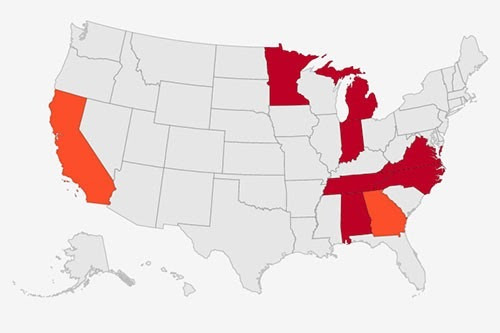
Week 2: Sickle Cell Data Collection (SCDC) |
|---|

This week, we’re sharing information about CDC’s SCDC program and resources. Although SCD is one of the most common genetic (inherited) conditions in the United States, there is still a lot of information that healthcare providers, researchers, and public health professionals do not know. For example, we have limited information about how SCD affects people during their lifetime, where people with SCD live, and how often they use healthcare services. To help fill these knowledge gaps, CDC and participating states conduct SCD surveillance (collecting or gathering information) through the SCDC program to collect information on diagnoses, treatment, and healthcare access for people with SCD. Learn more about SCDC and find related resources.
CDC's SCDC

- Learn about CDC’s SCD surveillance history. Read a fact sheet outlining and comparing CDC’s past and current surveillance projects.
- Currently, California and Georgia participate in the SCDC program.
- Find California and Georgia information from the SCDC program.
- Find materials, such as fact sheets, reports, and webinars from the SCDC program.

- CDC is helping additional states get ready to collect SCDC information through cooperative agreement number DD19-1906. CDC is funding nine states for 1 year to build capacity for a statewide SCD surveillance system. California and Georgia, the first two states to be funded to collect SCDC information, are providing technical assistance based on their SCD surveillance knowledge and experience. The other seven states (Alabama, Indiana, Michigan, Minnesota, North Carolina, Tennessee, and Virginia) are developing new frameworks for their surveillance systems. Capacity building is taking place through a series of web-based learning sessions, in-person meetings, in-state and cross-state relationship building, and ongoing communication to create required partnerships, information sharing agreements, and the necessary information storage system. View the CDC press release announcing the funding for this work.
- Under a new cooperative agreement, DD20-2003, CDC will fund states for 3 years to implement the SCDC program. This project will improve and expand the current SCDC efforts by increasing the number of states involved in the program, thereby enhancing understanding of
- The number of new cases of SCD in each state (incidence);
- The number of existing cases of SCD in each state (prevalence);
- Characteristics that describe people living with SCD in each state such as age, race, sex, marital status, educational level;
- The use of healthcare services, such as how often people with SCD go to the emergency department and;
- The number of deaths from SCD in the United States.
- The Bloodline is a quarterly e-newsletter providing updates about the SCDC program. Visit the web page to subscribe.
- SCDC webinars, hosted by the SCDC program in California, are free and open to the public. Watch previous recordings or sign up to join the email list for announcements about upcoming webinars.
Want to learn more about SCD? Visit our SCD website.
Next week, we will share information and resources on diversity in SCD.
For the latest news and updates, follow us on Twitter @CDC_NCBDDD.






















.png)











No hay comentarios:
Publicar un comentario